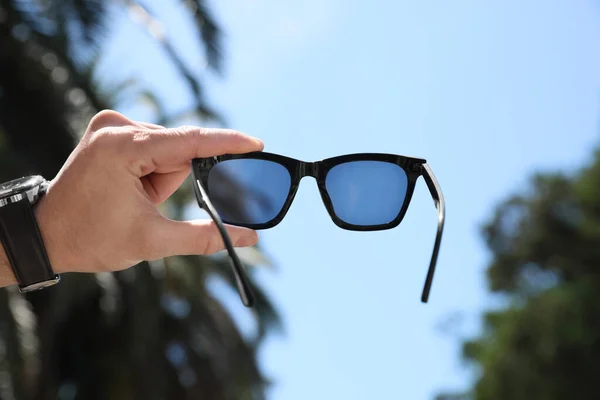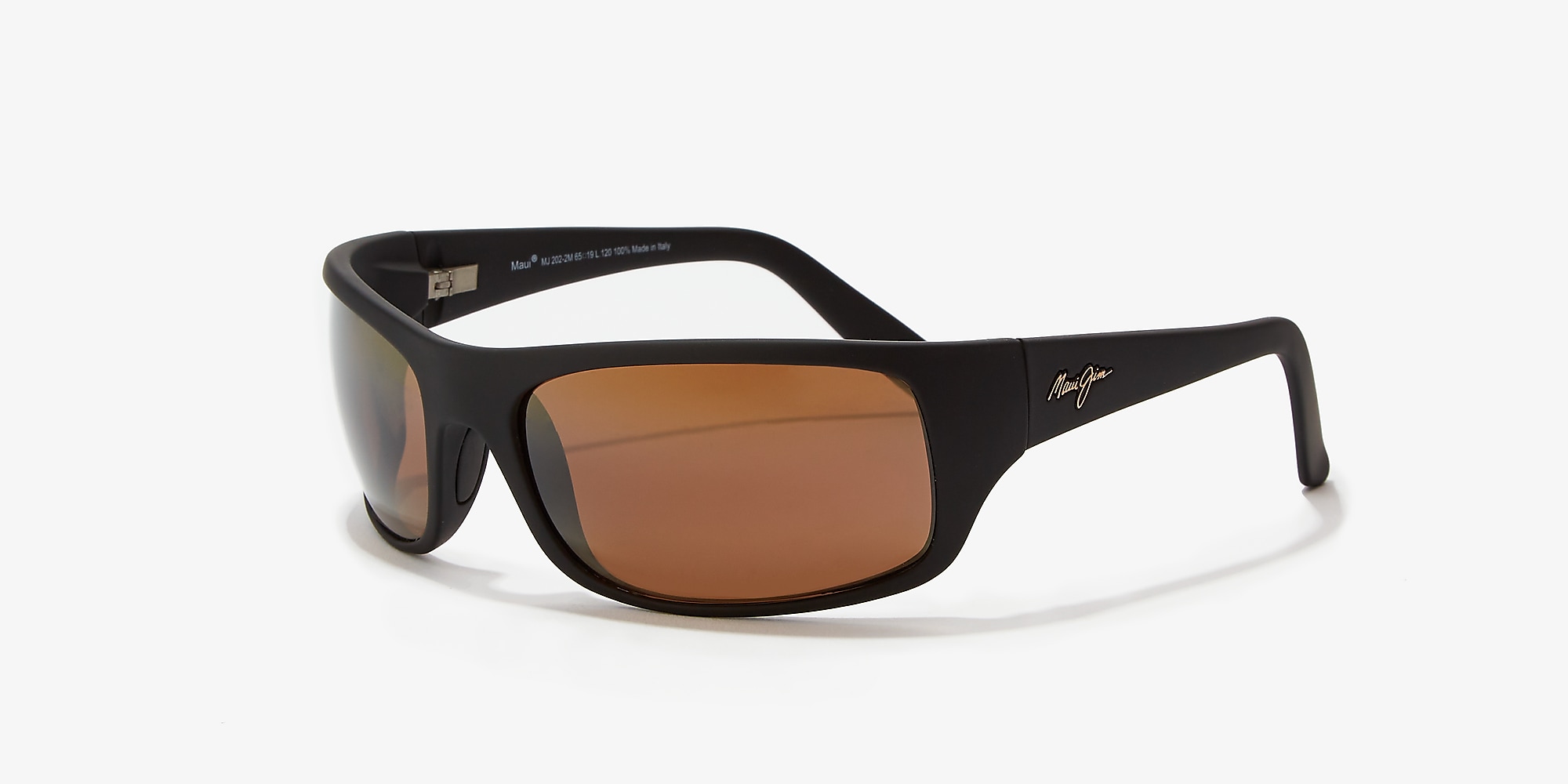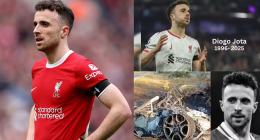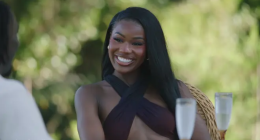To ensure the authenticity and adherence to the safety standards of your sunglasses, you can conduct a simple test on the lenses to verify their polarization.
The distinctive anti-glare technology embedded in these lenses, designed to shield your eyes from the sun, possesses characteristics that sharply contrast with those of non-polarized lenses.

To ascertain the polarization of your sunglasses, perform a test using a reflective surface, observe a computer screen, or carefully compare your pair with another. A convenient method is inspecting the ‘polarized markings’ usually along the temple. If uncertainty lingers, follow these steps: place the sunglasses in front of a light source, whether from a TV screen or ceiling lights. Orient them at a 90-degree angle, and you’ll observe a lightening of the lens tint. Shift them to a 180-degree position, and you’ll observe the lenses again darkening. This quick examination ensures you are receiving a product that aligns with polarized standards.
What Are Polarized Sunglasses?
Polarized sunglasses are a type of sunglasses that have a special filter added to the lenses that reduces glare. Glare is caused by sunlight reflecting off of horizontal surfaces, such as water, snow, or the hood of a car. This reflected light can be very bright and uncomfortable to look at, and it can also make it difficult to see clearly.
Polarized lenses work by filtering out this horizontal light. The filter is made up of a thin film of plastic that is aligned in a specific way. This film only allows light waves that are vibrating in a vertical direction to pass through. As a result, the horizontal light waves that cause glare are blocked.
The benefits of wearing polarized sunglasses include:
- Reduced glare
- Improved clarity and visibility
- Increased comfort for your eyes
- Enhanced color perception
Polarized sunglasses are a good choice for anyone who spends a lot of time outdoors, especially in bright or sunny conditions. They are also a good choice for drivers, as they can help to reduce glare from the road and other vehicles.
However, there are a few things to keep in mind when wearing polarized sunglasses. First, they can make it difficult to see certain types of electronic displays, such as LCD screens. This is because the filters in polarized lenses can block out some of the light that is emitted by these displays. Second, polarized sunglasses can be more expensive than non-polarized sunglasses.
Overall, polarized sunglasses are a great option for anyone who wants to improve their vision and comfort in bright conditions. If you spend a lot of time outdoors, or if you are bothered by glare, then polarized sunglasses are definitely worth considering.
3 Easy Ways To Test If Your Sunglasses Are Polarized
Beyond the aforementioned techniques, here are three additional uncomplicated ways to confirm the legitimacy of your polarized sunglasses. Fear not, as these steps require no specialized tools, ensuring an easy and effective assessment of the polarization filters.
Method 1 – Reflective Surface
In this method, polarized sunglasses are tested through a reflective surface. Begin by locating any reflective surfaces; a mirror is an ideal example. If a mirror is unavailable, opt for any reflective tabletop or flat surface.
To execute this test successfully, position yourself at least 2 to 3 feet away from the reflective surface. Create glare by using a flashlight directed at the mirror, observing the reflection bouncing off in the opposite direction. Adjust the angle of the light source until the glare aligns with your eye level or within reach.
Now, don your polarized sunglasses and hold them approximately 6 to 8 inches in front of your eyes. Adjust the distance based on the lens size. Gradually rotate the sunglasses upward until they reach a 60-degree angle, with one lens slightly higher than the other. Assess the level of glare; if it diminishes or disappears entirely, congratulations, your sunglasses are polarized. However, at a 90-degree angle, the polarized filters would be ineffective, as this position cancels the vertical sieve’s effectiveness against horizontal light rays.
Method 2 – Compare Two Pairs of TAC Sunglasses
For this test, acquire two pairs of polarized sunglasses. Hold both pairs at eye level in their standard 180-degree position, ensuring enough light for clear visibility and maintaining a 1 to 2-inch gap between the lenses to prevent scratches.
Simultaneously look through both pairs and rotate one pair to approximately 60 degrees. If the overlapping area on the lenses darkens, both pairs are polarized. If no differences or darker shades appear in the overlapped area, the sunglasses lack polarization.
Method 3 – Test Card
The third test involves looking at a specialized pattern through polarized sunglasses. Some optical stores provide a polarized sunglasses test card featuring scenery with a ‘secret’ image or a missing part.
The pattern employs special paint for the hidden image, reflecting so much light that it appears white or shiny to the naked eye. This part of the pattern only reflects polarized light, which is blocked by polarized sunglasses, revealing a dark background pattern and crisper images.
Are Polarized Sunglasses Beneficial for Your Eyes?
Polarized sunglasses prove advantageous for outdoor activities, enhancing vision in the presence of excessive glare or light. They are particularly useful for driving, although not recommended for airplane maneuvers due to the LCDs used by pilots, which already possess anti-glare features.
Overall Top-Rated:
-
Maui Jim: Maui Jim sunglasses are renowned for their outstanding clarity and color enhancement, thanks to their proprietary PolarizedPlus2 lens technology. They also offer excellent UV protection and a variety of styles to suit any taste.
-
Ray-Ban: Ray-Ban is a classic brand that offers a wide range of polarized sunglasses, from timeless Wayfarers to trendy Aviators. Their lenses are scratch-resistant and offer good UV protection, making them a reliable choice for everyday wear.
Best Budget:
-
Knockaround: Knockaround sunglasses are a great option if you’re looking for a stylish and affordable pair. They offer polarized lenses with UV protection and come in a variety of colors and styles. Plus, they’re backed by a lifetime warranty, so you can buy with confidence.
-
Zenith: Zenith sunglasses are another great budget-friendly option. They offer polarized lenses with UV protection and come in a variety of sporty styles. They’re not as durable as some of the higher-end brands, but they’re a great choice for occasional use.
Best for Specific Activities:
-
Costa Del Mar: Costa Del Mar sunglasses are designed specifically for water activities. Their polarized lenses cut through glare and enhance clarity, making them perfect for fishing, boating, and other water sports.
-
Oakley: Oakley sunglasses are known for their durability and performance. They offer a variety of polarized lenses with different features, making them a good choice for athletes and anyone who needs sunglasses that can take a beating.
Things to Consider When Buying Polarized Sunglasses:
- Lens type: There are different types of polarized lenses available, each with its own advantages and disadvantages. Trivex lenses are lightweight and scratch-resistant, while polycarbonate lenses are more affordable but can scratch more easily.
- Fit: Make sure the sunglasses fit your face snugly without being too tight. They should also block out light from the sides and top to provide maximum glare protection.
- Style: Choose a style that you like and that flatters your face shape. There are endless options available, so you’re sure to find a pair that you love.
Conclusion
In conclusion, polarized sunglasses excel in mitigating distracting glare, and distinguishing genuine from fake ones is straightforward. Natural light serves as an effective tool to assess the polarized filter’s performance. Opt for polarized sunglasses from trusted brands to eliminate suspicions about their polarizing quality.
Frequently Asked Questions
Q: Are polarized sunglasses suitable for night driving?
A: Polarized sunglasses are not recommended for night driving. While they excel at reducing glare from sunlight, they may compromise visibility in low-light conditions. It’s advisable to use clear, non-polarized lenses during nighttime driving for optimal safety.
Q: Can polarized sunglasses harm your eyes?
A; No, polarized sunglasses are designed to protect your eyes. However, it’s essential to ensure that the sunglasses you choose meet industry standards. Poor-quality lenses or counterfeit products might not provide the intended protection, so it’s crucial to purchase from reputable brands.
Q: How often should I replace polarized lenses?
A: The lifespan of polarized lenses depends on factors like usage and care. Generally, it’s recommended to replace them every two years, especially if you notice scratches, damage, or a decline in optical quality. Regular replacement ensures continued effectiveness in reducing glare.
Q: Do children need polarized sunglasses?
A: Yes, children can benefit from polarized sunglasses. Children are often more susceptible to harmful UV rays, and polarized lenses can provide added protection. Ensure that the sunglasses fit well and meet safety standards to safeguard your child’s eyes during outdoor activities.
Q: Can I wear polarized sunglasses with prescription lenses?
A: Absolutely. Many eyewear brands offer prescription lenses with polarization. You can enjoy the benefits of reduced glare and enhanced visual clarity while addressing your specific vision needs. Consult with your eye care professional to explore polarized options for prescription sunglasses.
Q: Are all polarized lenses the same?
A: Not all polarized lenses are created equal. Quality can vary among brands and models. Factors such as polarization efficiency, lens clarity, and overall construction contribute to the performance of polarized sunglasses. Choose reputable brands known for adhering to rigorous testing standards to ensure you get the best quality lenses.
Don’t miss | Key Considerations Before And After Rhinoplasty: Questions to Ask Your Doctor
Note: This article is written based on scientific evidence found by the 247newsaroundtheworld.com team. Sources are duly referenced with keywords hyperlinked to source websites and are clickable for reference.
Last Updated on January 25, 2024 by 247 News Around The World












